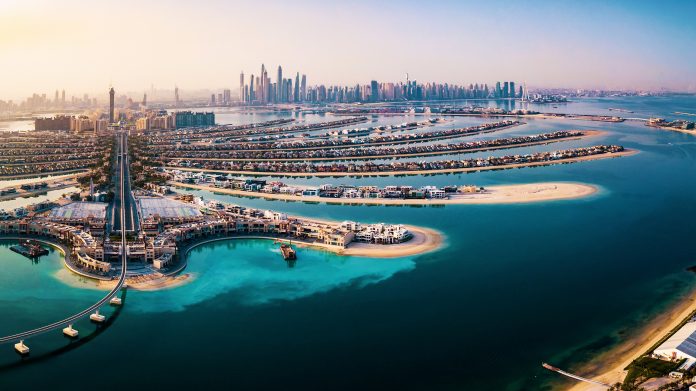Aymen Khoury, Partner at Dorsey & Whitney LLP, argues that Middle East investment strategies are pointing toward a new approach
The number of sovereign wealth funds (SWFs) worldwide has grown steadily in the last 20 years, from 62 funds in 2000 to 176 in 2023. During that time, assets under management of SWFs have increased from $1 trillion to $11.36 trillion.
Of the 50 largest funds ranked by assets under management, 13 are based in the Middle East and include all the Gulf Cooperation Council (GCC) states, Egypt and Iran.
Most recently, Saudi Arabia’s SWF, the Public Investment Fund (PIF), has dominated the spotlight, following high-profile sports investments, including LIV Golf and Newcastle United.
Such investments, however, are not new. They follow similar acquisitions from neighbouring SWFs in Abu Dhabi and Qatar of Manchester City and Paris Saint Germain (PSG), respectively. In previous years, acquisitions were dominated by Qatar’s purchase of ‘trophy’ assets such as Harrods and the Shard in London or stakes in foreign businesses such as Volkswagen.
Those investments, particularly in global sport, made sense for relatively young nation-states with vast cash reserves generated from oil and liquified natural gas (LNG) revenue. They were brand-focused and brought with them recognition and profile.
On the whole, they proved to be very effective strategies. Etihad and Emirates Airlines became household names. PSG’s chairman secured a seat on UEFA’s executive committee, and Qatar won the greatest prize of all: the right to host the World Cup.
Inward Middle East investment
Arabic SWFs are not new players. The Kuwait Investment Authority is the oldest SWF in the world. However, there are new features of the investment strategy of these funds. Whether it is the Palestine Investment Fund or the Public Investment Fund, the SWFs also seek to bring a positive social and economic impact to its people.
The highest profile example recently has been the PIF. As part of its 2030 Vision of diversification away from oil revenues, huge investments have been made to build the country’s football Pro League, mega hotel and leisure resorts and new transport systems. Inward investment is now a key feature. Nation-building is at the core of many investments, making economic sense for a country like Saudi Arabia, with a population of 37 million people, sizeable compared to the rest of the GCC.
Even in Formula 1, a trophy asset on paper, the investment reflects a shift. Saudi is making clear to the world that everyone is now welcome here when it had, until recently, a closed-door policy for so long. Jeddah is now on a roster that includes Monaco, Miami and Barcelona.
Adapting and diversifying
The investment strategies being adopted are dynamic and more strategic than ever. These SWFs seek influence and know-how through investment in technology and innovation-driven companies, alongside high-priority sectors such as healthcare, renewables, logistics and digital infrastructure.
Dorsey & Whitney LLP’s team in London and New York recently assisted Manara Minerals (“Manara”), a joint venture between the Saudi Arabian Mining Company (Ma’aden) and the PIF, with Manara’s investment in global mining company Vale’s base metals business. Vale Base Metals’ focus includes mining copper and nickel, two vital elements in producing electric vehicle batteries.
Middle Eastern funds have also transformed their governance and approach. Global Sovereign Wealth Fund’s Governance, Sustainability and Resilience (GSR) report for 2023 found that Middle East funds were the best improvement in governance, sustainability and resilience.
Diversification is the key feature. Post-pandemic oil and gas prices and the war in Ukraine brought windfalls to such funds, still primarily driven by surplus revenue from exporting commodities. These revenues are being used to mitigate their own, and the global energy transition and incubate technology and expertise at home to build more dynamic, vibrant societies.
But they are also used to finance some of the largest rescue packages and acquisitions worldwide to secure seats on global tables, which, in turn, brings geopolitical influence.
There is also increased regional cooperation. PIF and the Oman Investment Authority signed a memorandum of understanding to expand investment in Oman. The Qatar Investment Authority (QIA) announced its intention to make multibillion-dollar investments in Iraq.
The UAE’s ADQ has also taken steps to increase its investments in Egypt and co-invest with The Sovereign Fund of Egypt. Funds are now in a position to choose deals across sectors and regions.
There has been a widening in the geographic focus of investments towards high-growth economies worldwide, particularly a shift towards investment in Asia, with China and India the primary beneficiaries.
The golden age of Middle Eastern SWFs?
SWFs in the Middle East, particularly those from the Gulf, are currently in a position of considerable strength in an otherwise volatile and uncertain global economic landscape.
Buoyed by strong domestic bourses and somewhat insulated from the fears of recession, high interest rates, a liquidity crisis and war in Europe, SWFs in the region have sought to capitalise on their current power to spend and need to diversify.
More sophisticated investment strategies are helping create sustainable economies and advance societies at home whilst claiming larger roles and influence on the world stage. These funds are changing traditional and moulding new, landscapes as global enterprises and nations alike, including Britain (particularly in its post-Brexit reality), are vying to be beneficiaries of investment from the region.)
However, any investment must fit the profile of generating a return, assisting in nation-building and bringing influence for the states investing. More than ever, these SWFs are in a buyer’s market with many conditions well suited to them achieving their visions.
Contributor Details
Editor's Recommended Articles
-
Must Read >> £3m to boost low carbon heating














